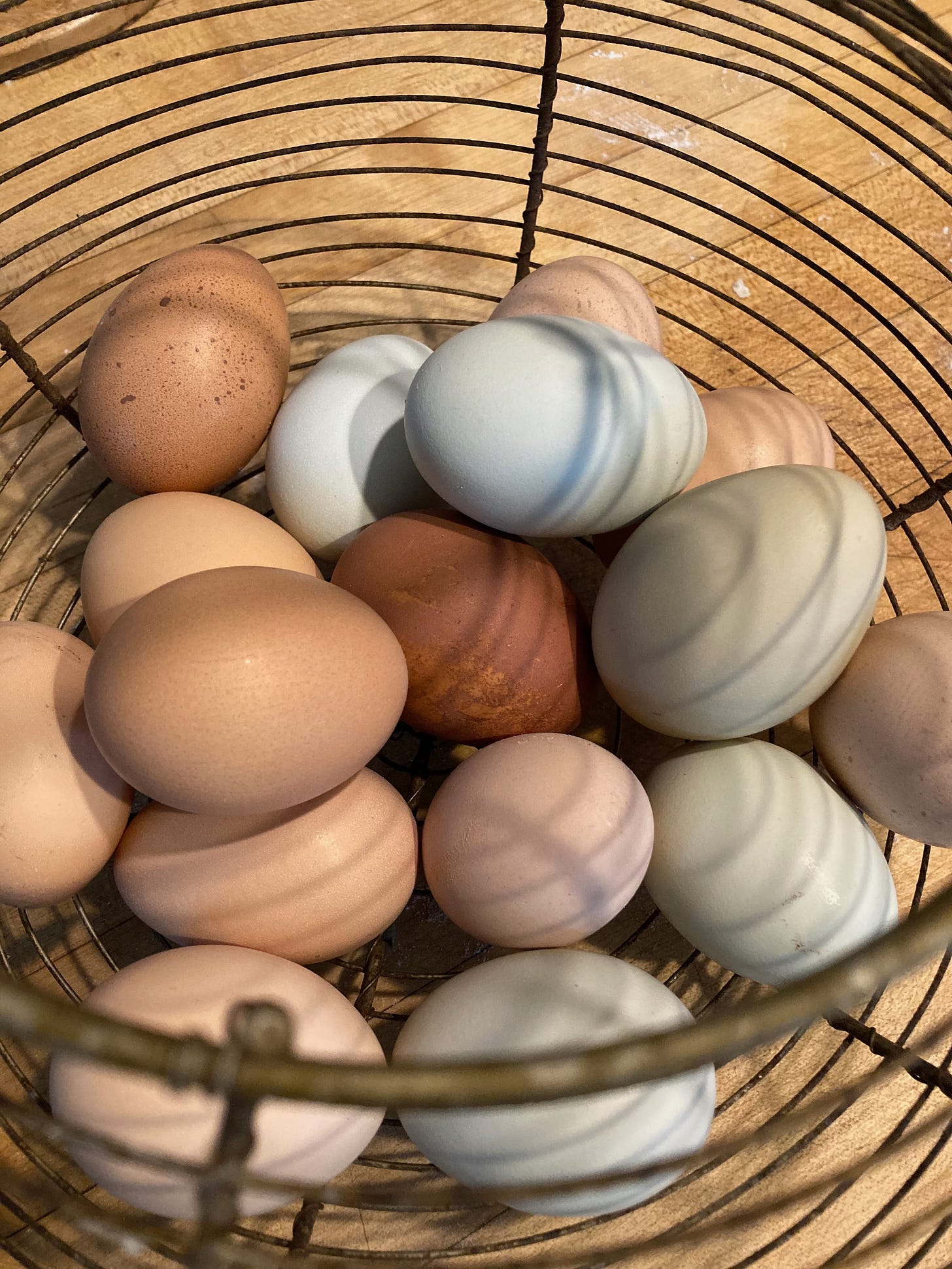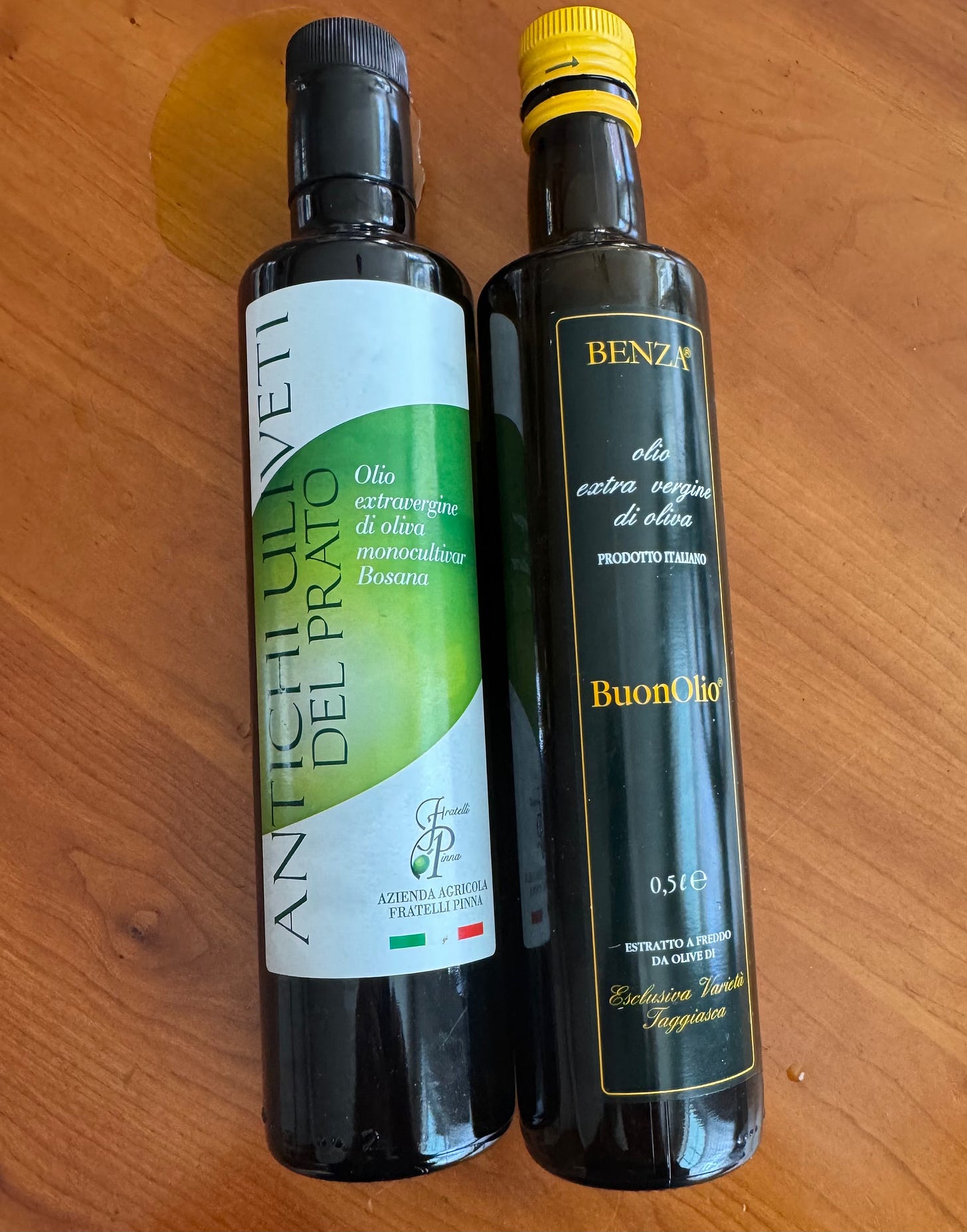Dear March, come in!
How glad I am!
I looked for you before.
Put down your hat —
You must have walked —
How out of breath you are!
First, the good news: new olive oils for your Easter/Passover table
It didn’t take me very long, after discovering Easter in the Mediterranean, to figure out the direct connection between the great Christian festival of Easter (Pasqua in Italian, Pâques in France, Pascuas in Spanish, Pascha in Greek) and the equally great Jewish Passover (Pesach in Hebrew). And then to go on to find connections with the old religions and their spring celebrations of the earth’s renewal. Christians may accuse me of blasphemy but there’s a definite link between Penelope’s emergence from the darkness of hell and Christ’s own resurrection.
In any case, for Christians, Jews, pagans, and unbelievers alike, March brings the vernal equinox and the promise of renewal. After a winter of such extreme disarray, both climatic and political, this year it is truly a blessing.
And as part of that blessing, right on schedule fresh, new-harvest olive oils are arriving from the Mediterranean just in time for a celebratory spring feast. Here are two that recently graced my kitchen table and that I find especially notable:
Antichi Uliveti del Prato is from the Pinna family farm up in the northern reaches of Sardinia, the big island (second largest in the Mediterranean) off the Tyrrhenian coast of Italy. The oil is made from the family’s own groves of bosana olives, a Sardinian favorite that’s said to be very high in the polyphenols that make extra-virgin olive oil so good for us—and so delicious. Antichi Uliveti’s oil has an herbal complexity that’s very pleasing, like wild meadow grasses, sweet but with a chicory-bitterness underlying it all. And here’s an unorthodox use for it: If you’re planning on a traditional Easter baked ham, with its complex and sometimes warring flavors of sweetness (maple syrup? honey? brown sugar?), fruitiness (pineapple? orange?), and spiciness (cloves, for sure), serve it with a cut-glass carafe of Antichi Uliveti right on the table and encourage your guests to garnish the ham on their plates with a significant dollop of this fine extra-virgin—it will tie all those clashing flavors together like a miracle of spring. And also be delicious on an accompanying salad.
The other oil, on the left in the photo above, is Benza BuonOlio, from the Ligurian Riviera, where the taggiasca olive has reigned supreme quite possibly since Roman times. This is an entirely different oil from the Sardinian, softer, gentler, and to my mind, to my palate, it reflects the mellow, more accommodating personality of the people who dwell in this genial, narrow curve of the Mediterranean, beloved of the great Impressionists for its blue skies and balmy climate.
With a distinctive but not overpowering flavor of almonds (or perhaps it’s the hazelnuts that also come from this region) and just a hint of bitterness at the finish, BuonOlio demands to be used in pesto genovese, but it also cries out for any kind of seafood, from monkfish to octopus to mussels and clams. Every Ligurian you encounter, whether chef, cook, gourmand, farmer, fisherman, street scamp, or taxi driver, from San Remo to La Spezia, will swear to you that seafood is what taggiasca oil is made for and vice versa. Try just basting a fillet of fresh salmon with BuonOlio taggiasca, sliding it into a very hot oven for not more than 15 minutes, then garnishing that salmon with more, fresh BuonOlio and a spritz of lemon and you will not need to add a single other item to make your dish perfect. (And salmon for Easter? What a great idea!)
Both of these oils are available from Gustiamo.com, which happily supplied me with samples—thank you!
St. Patrick’s Day: a lesson for Americans
The first year that I lived in Rome I sent my two babes to Mater Dei, a posh school in the Piazza di Spagna that was run by Irish nuns, a place where per bene Italian girls would learn to speak proper English. Sister Kevin was the head of the school and all the senior teachers were Irish; the lesser ones, the ones who did the mopping up of tears and spilt milk, were Italian. Ecco, the first Italian word that my children learned was the word for a nun: “Sees-stair!”
So, that spring, on St. Patrick's Day, faithful to the cause, I put a Kelly green ribbon in Sara's hair and tied a green bow around the neck of Nico's smock (all students wore black uniforms, the younger ones were in smocks, the older in proper pinafores) and sent them off to school, as we would have done back in the U.S.
To my surprise, my little Americans were apparently the only ones celebrating the Great Irish Day. The nuns had no idea, not an inkling, of what the occasion was—wearing of the green? What green?
Later, on Nico's birthday, I sent him to school with a couple of boxes of cookies from a fancy pastry shop to share and celebrate with his classmates. Sister Immocalata was the Italian nun charged with wiping noses (and bottoms no doubt at times) and keeping the little ones in order for the more foreboding Irish classroom teacher. So it was little, round, smiling Sister Immocolata who dutifully handed out a cookie at break time, one to each child. “And did you have enough?" I asked Nico afterwards. "Oh yes," he said, "we had too many."
"And what became of them? Did you give the rest to the nuns?"
"Oh no,” he said, “Sister Immocalata and I went in a closet and ate them all by ourselves."
Lessons learned.
Let’s get together—how about Sunday lunch?
We humans are a naturally gregarious species going far back into our prehistory. Like our closest relative, the bonobo ape, with whom we share an astonishing 98.7% of our genetic make-up, we happily group together to eat, sleep, shelter, socialize, forage, groom, and mate. On cold nights our primitive ancestors cuddled together round a fire at the cave door and on warm days they gathered at the shore, whether river, marsh, or ocean, to harvest with their chums the small fish and shellfish that would be dried in the sun to provide for their collective future. Together we thrived. (Or maybe throve?)
Now, five years after the impact of Covid first began to be felt, behavioral scientists and popular commentators alike have joined to evoke a doomsday scenario about what we’ve lost as a result of pandemic-imposed isolation--our social fabric, our species-wide need for complex sociality, our over-riding urge to group together. Covid was a crash course, the New York Times reminds us, in solipsism, recalling Margaret Thatcher’s misleading dictum that there is no such thing as societies, only individuals and families.
To which I tend to say, hey, wait a minute! It’s true, we all complain, we’ve lost some sense of intimacy, we feel the isolation, we’re suffering a national, possibly international, crisis of loneliness. Everyone talks about it and no one gives dinner parties anymore! But it’s also true that what goes around comes around. Societies have lost their sense of community in the past, over and over, and managed to regain togetherness. We can and should just put paid to the whining and get on witht it.
So here’s my modest proposal: Give a dinner party! Yes indeed, give a dinner party but keep it simple. Invite four or five friends, colleagues, co-workers, neighbors, cousins, whatever. And don’t even call it dinner. Don’t even think about formal invitations. Send text messages: “Hey! Come for supper Saturday night! Come for Sunday lunch!”
Plan on a no-thought menu: soup or pasta, salad with bread and cheese, and nothing but fresh seasonal fruit for dessert. Right now that would be oranges, cut up if you wish or just piled in a bowl and set in the middle of the table. At a dinner party just the other night, dessert was a cut-glass bowl of citrus— tangerines, blood oranges, Caracara oranges, regular old Florida juice oranges, navel oranges, mandarins, clementines—all different colors, all peeled and sliced and dressed with a sprinkle of sugar and a dash of booze (in this case Tequila but I might use rum or apple brandy or leave the booze out entirely and add some cranberry juice instead), served with a plate of Scottish shortbread cookies right out of the box and, as an added fillip, a jar of clotted cream that might as easily have been sour cream or yogurt or even vanilla ice cream. Simplicity and ease were the keynotes for that dessert as they were for the rest of the meal.
In the Italian countryside, where I have spent some of the happiest years of my life, Sunday lunch is a very big deal and often involves remarkable efforts, like pasta made from scratch, wood-oven-roasted meats, and an array of antipasti worthy of the most distinguished restaurant. I love the idea of Sunday lunch but I keep it much, much simpler. I’ll give you two quick-and-easy pasta dishes to start with (scroll down for the directions) and if you add to that an abundant salad of fresh greens, served with a wedge of good cheese and the best bread you can lay your hands on, and if you serve it all with verve and an abundance of wine, you will not need a Martha Stewart style groaning board set with antique linens and serving dishes you sourced from the Brimfield market and candles in sconces from your great-grandmother’s attic.
Aggiungere un posto al tavolo
What you will need is an ample table with a clean cloth, folded (possibly un-ironed?) napkins, plenty of plates and chairs and glasses, and a large enough pot of whatever so that when someone drops in at the last minute, you’ll just, in true Italian fashion, add a place to the table. Aggiungere un posto al tavolo.
And in that way, doing that, we may start, slowly, to rebuild our communities, our communion. It will take time, but so does good bread and good wine, so just be patient and keep at it. You cannot lose!
Two quick and easy pasta dishes for Saturday supper, Sunday lunch, or whenever and wherever your collective gathers together:
Keep reading with a 7-day free trial
Subscribe to On the Kitchen Porch to keep reading this post and get 7 days of free access to the full post archives.









